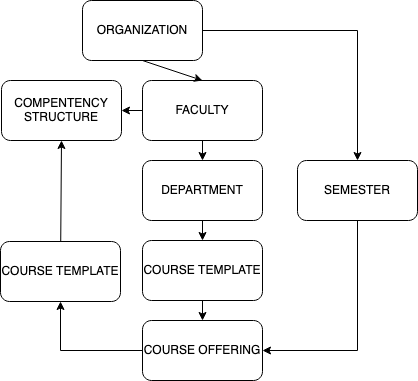Parts of this post were drafted in 2018. I’ve left them as-is and finished the blog post because I think it’s kind of crucial to understand that things have (and haven’t changed) a lot in this space. The D2L Awards tool is in desperate need of improvements, which is related to the underlying release conditions logic limitations and the way courses are positioned in the LMS. Those are structural issues, and entirely not D2L’s fault. In fact, it’s an education problem. Anyways, to the post:
I’ve been working with D2L Awards since they became available at my institution, around the Fall of 2014. I’d spent some time prior to that adding my two cents on the Open Badges Community calls, and tried to add the higher education perspective where I could (around the badges specification and higher education policy). One of the great values of badges is that they are very transportable – they essentially belong to the earner, with some caveats (like the badge hasn’t been revoked, or expired). To me this makes a lot of sense when you think of skills developing and documenting learning, which is the areas I’ve been working in the last few years.
So when D2L announced that the Awards tool would issue Digital Badges, I was very very happy. Well, truth be told, I wasn’t happy at all, because I had been working on installing our own badge issuing server and integrating it with D2L, so all of that work (the previous year or so) was down the tubes. But the upside was that it was an integrated experience and worked out of the box (so to speak). One of the first challenges was to get global badges, or the sort of thing that might transcend a course to work. The theory was that if you earned several badges from several courses (in D2L admin-speak, course offerings) you’d need to have some sort of way to know that. The somewhat simple approach is to use a higher level organization unit to manage that for you.
Typically, in a LMS structure you have the top level, or Organization level; underneath that some form of Department or Faculty, and underneath that Courses. D2L Brightspace also has these things called Templates above the Courses, other LMS’s might have those structures, maybe not. Much of that structure is determined by your institutions Student Information System (typically Banner or PeopleSoft, but may be renamed to suit the institutions’ whims).

To facilitate badges to be issued as a result of other courses, or as part of an unofficial grouping (think HR related training) you will have to create a shadow structure that connects the Courses and Templates to a shadow Department. You could use the existing Departments to do this as well, but it’s generally safer to do this in a shadow organization rather than the real one. There’s little danger of doing anything damaging in this space, but you will need to be in and out of here doing enrollments. Some SIS systems already have enrollments at Department levels (we don’t) – so you definitely don’t want to mess with what your SIS does. If your SIS doesn’t do enrollments at the higher levels (excepting Organization and Course levels) then you could use existing structures, but you then risk breaking things if the SIS changes Departments or enrollments shift.

The other benefit of a shadow structure is that you could combine things in unofficial ways. For instance, you could connect all the Community Education courses together across the institution, or connect experiential learning, or co-op… you get the idea.
Essentially, you don’t use the Awards tool as a relationship, but the Competencies tool with the Award tool as the outcome of the relationship. The Competency feeding up the hierarchy of organizational units, and then you can trigger awarding a Badge or Certificate with the activity that granted (in whole or in part) at a higher level. The student would get a badge from an organization they may or may not see (depending on the D2L permissions at that level, if any).